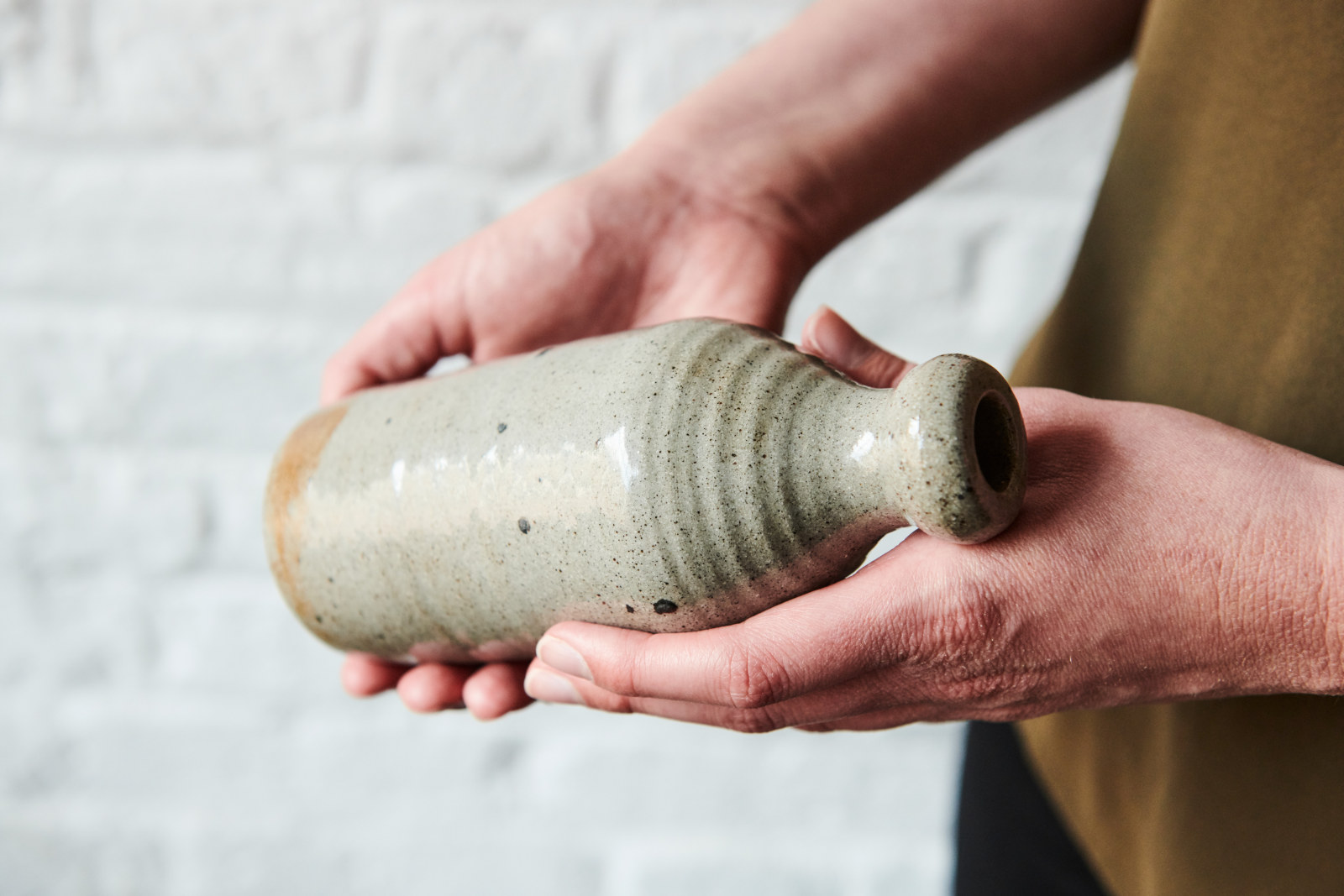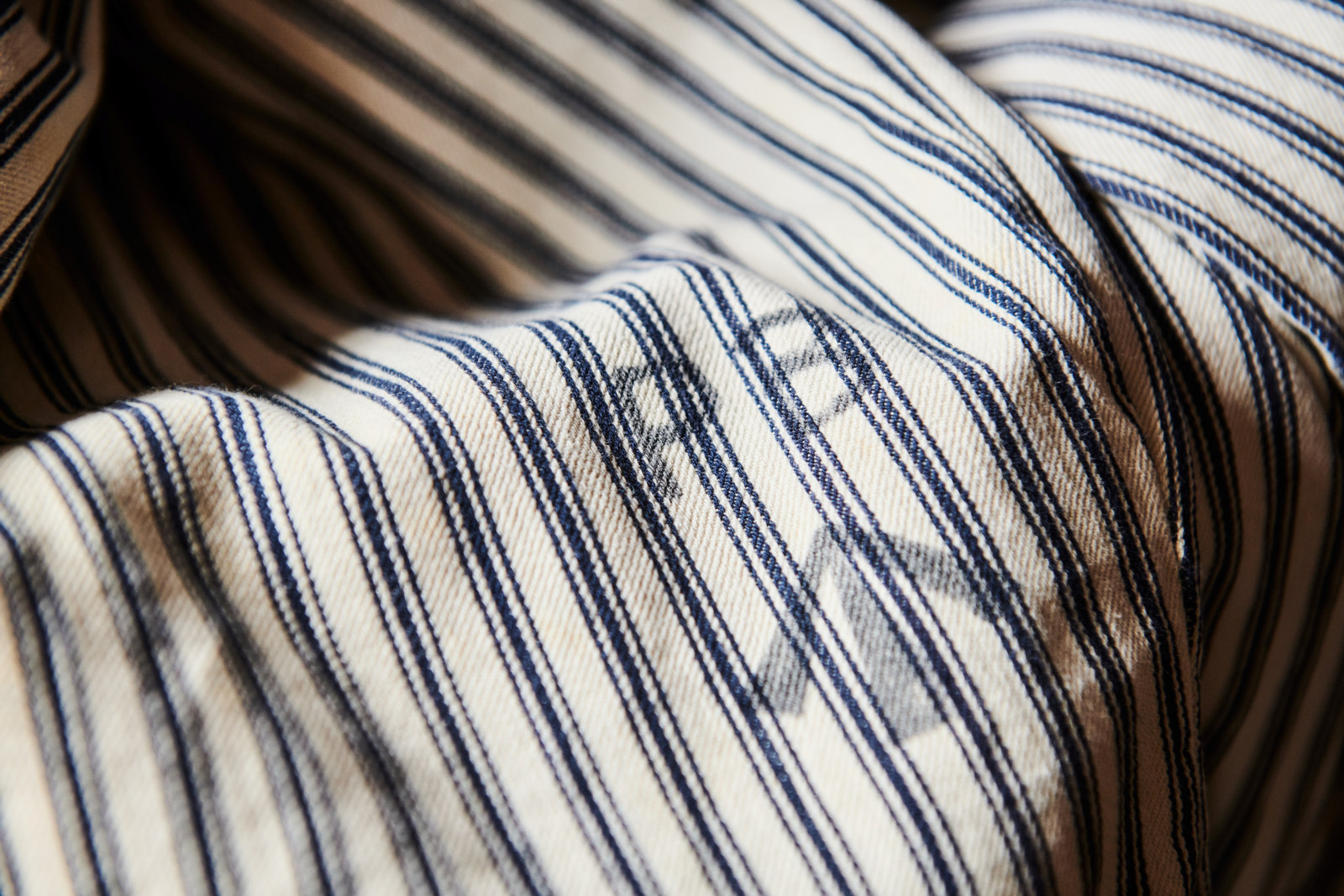What work did convicts do?
When the bell in the Barracks courtyard rang at sunrise, it told the men to get out of bed and head downstairs for breakfast. The second time the bell rang it told them it was time to go to work.
There was a huge amount of work to do around the town of Sydney, and most of it was done by convicts who did lots of different jobs. Working for the government was part of the punishment of transportation and they had to work hard all day, six days a week.
Before they left the Barracks, the convicts lined up in the yard so the Superintendent could check that everyone was present, and in case they had any stolen goods.
Many of the convicts who lived at the Barracks were skilled tradesmen, so they were valuable to the government.
Some were trained to make bricks, build walls, carve stone, cut down trees and work the timber, while others were trained to make buckets and water barrels and to make wheels. Many were skilled carpenters, blacksmiths or cobblers (shoemakers).
At the lumberyard, convicts worked to turn large wooden logs into smaller timber planks for buildings. They also made doors, window frames, shutters and roof shingles.
Down at the edge of Sydney Harbour, convicts built boats and made rope and sails for ships. Other convicts transported water and food stores, or loaded and unloaded ships that had arrived from other parts of the world.
Some convicts worked on the water as boatmen, cut grass to feed cattle, or drove bullock teams (large wagons pulled by cattle) around the town, delivering goods to different businesses, work sites, and warehouses.
A lot of the work that convicts around the colony affected Aboriginal people, their way of life and their close connection to their country.
Cutting down trees and clearing land destroyed traditional hunting grounds. Catching fish and collecting oysters from the waterways meant there was less available for Aboriginal people to feed their families. Building farms and fences made it harder for Aboriginal people to travel across, care for and camp in areas that they had used and nurtured for many years.
Convicts who did not have a special skill worked outdoors as labourers. They cleared land, ploughed fields, harvested crops, worked in vegetable gardens or built fences.
They cut up wood for fires and collected shells from rivers and waterways to crush for lime mortar, an important building material. Some men worked in road gangs, building roads and bridges, while others worked in stone yards, breaking rocks down into smaller, more useful pieces.
Building the Barracks
Hundreds of convicts were needed to build the Hyde Park Barracks itself. Work started in April 1817, and it was finished just over two years later, opening to house the first groups of convicts in May/June 1819.
The place chosen for the Barracks had long been used by Aboriginal people for camping and was on the track between Warrane (Sydney Cove) and Woccanmagully (Farm Cove).
Once work started on the building, it became much harder for Aboriginal people to use the area. This is an example of how the growth of the colony of Sydney affected the lives of the local Aboriginal people, as they were forced off their traditional tracks, camping sites and hunting grounds.
To begin with, the scrubby bushland had to be cleared. The plan for the Barracks was then marked out on the ground using string and wooden posts. Long, heavy timber beams were put in place to make the scaffolding, and then convict workers started to lay thousands and thousands of bricks, building solid walls that had decorative arches and doorways.
Slowly the building took shape. Everything had to be cut, made and moved by hand. Smaller timber planks were used for the floors and ceiling, with hand-cut shingles laid down to cover the roof. Stonemasons also cut and shaped large sandstone blocks to build an outer wall that was meant to keep the convicts from escaping.
Watch now
Joseph Smith – convict brickmaker
Joseph was a trained brickmaker, worked at the brickfields – a very busy and dusty place.
He had been sentenced to death in London in July 1817, but his sentence was reduced to transportation ‘for life’. Before he left England for NSW, Joseph had engraved a coin as a keepsake for his wife, Mary Ann Smith.
He arrived in Sydney in April 1818 – while the Barracks was being built.
Joseph’s skill as a brickmaker would have been extremely valuable to the government, and he probably made many of the bricks that were used to build the Barracks walls.
Working at the Barracks
Not all of the convicts left the Barracks in the morning to go to work, with old, sick or frail men staying behind to work.
They raked the gravel yard, swept out the sleeping wards, opened the windows to let in fresh air, and shook out all the dusty blankets and folded them neatly.
Other men worked in the bakery, making the bread that the convicts ate for breakfast and dinner.
Some convicts were employed as overseers, to control the gangs of convict workers, and others were even paid to do more responsible jobs, like being a constable, a guard, or a scourger – the man who whipped the other convicts as punishment!
In 1826, a shoe- and clothes-making workshop was opened at the Barracks. Up to 23 trained leatherworkers worked there, making convict shoes. Another 20 men made convict clothes and police uniforms.
Related

Learning resources
Explore our range of online resources designed by teachers to support student learning in the classroom or at home

Resource
What food did the convicts eat?
In 1820, the convicts living at the Hyde Park Barracks would have been woken at sunrise by the ringing of a bell in the yard

Resource
What clothes did male convicts wear?
The convict men who lived at Hyde Park Barracks were provided with a uniform to mark them as ‘government men’

Resource
What did convicts do in their free time?
After a day of hard work, the convicts were walked back to the Barracks for the evening muster